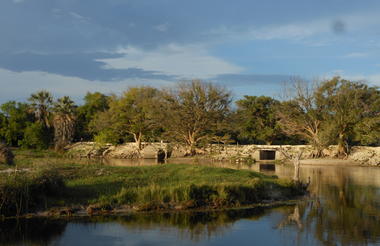At Victoria Falls, the earth splits open and swallows one of Africa’s greatest rivers, the mighty Zambezi, creating the largest sheet of falling water on earth. As the water hits the narrow depths of the Batoka Gorge beneath, it blasts a cloud of mist skywards, lending the falls their local name ‘mosi-oa-tunya’ (the smoke that thunders). When the Zambezi is its fullest, the mist hangs a permanent raincloud above the falls, showering visitors on even the sunniest of days and visible for miles around.
Above the falls on the upper Zambezi, boats cruise the tranquil water at sunset while the distant spray catches the fading light downstream. Below the falls, the Batoka Gorge’s rocky walls funnel the lower Zambezi into a chain of world-class rapids, prime for white water rafting.
Aside from being a UNESCO world heritage site and a natural world wonder, Victoria Falls also forms a natural border between Zimbabwe and Zambia. The falls can be seen from both countries, and for the most part the same activities are offered on both sides, from helicopter scenic flights to village visits and souvenir shopping.
Whether your idea of getting away from it all is a relaxed high tea in colonial grandeur or a heart-stopping bungee jump off a bridge, Victoria Falls keeps both the faint of heart and the most insatiable of adrenalin junkies busy for days.
From Zambia, a side on view of the falls is on offer with views into the Batoka Gorge, as well as the possibility of perching yourself at the edge of the falls on the vertigo-inducing Livingstone Island.
From Zimbabwe, you’ll get a full-frontal view of three quarters of the falls’ 1.7km wide curtain of water from viewpoints and footpaths meandering through a rainforest kept hot and humid by the spray of the falls.
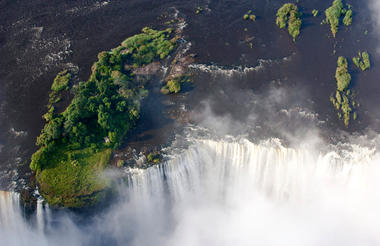
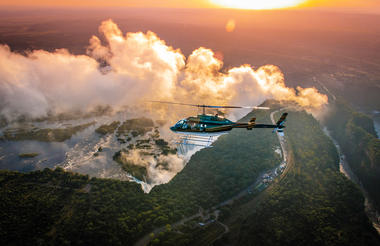
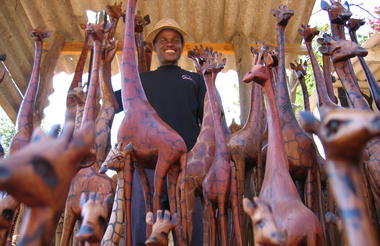
The Chobe Riverfront is an elephant mecca; home to the largest density of African elephants in the world. Travel here during winter and you’ll fast run out of fingers and toes while you count them drinking at the riverbanks and socialising out on the floodplains.
Thanks to its ease of access from Victoria Falls, the Chobe Riverfront is the busiest part of Botswana (though still a much quieter affair than most South or East African safaris). What Chobe lacks in solitude during the busier months, it more than makes up for with quality game viewing.
Chobe will leave you feeling tiny as giant elephant bulls stroll up next to your vehicle or snorkel alongside your boat. It will make you feel lost as hundreds of hippos and buffaloes crowd you out on the floodplains. It will put your heart in your throat as prides of lions stalk antelopes by the water’s edge, and it will leave you alone with your thoughts while the classic red sunsets melt over the river to a soundtrack of whistling fish eagles.
Chobe is not just a great introduction to Botswana. It also makes a rewarding repeat journey once you’ve ticked off the big stuff. It’s a place to search for the rare sable antelope, to spot that gem from the birders’ bucket list and to explore the remoter corners.
Where you stay in Chobe makes a huge difference to your safari experience. The most affordable options are at bigger hotels in a town setting where you’ll share your game drives with a few more vehicles. On the more exclusive end, stay in a wilder area in or around the park, listen to the sounds of the bush at night and get a head start on accessing the park for activities.
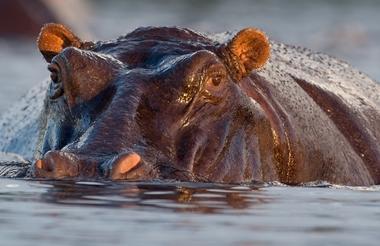
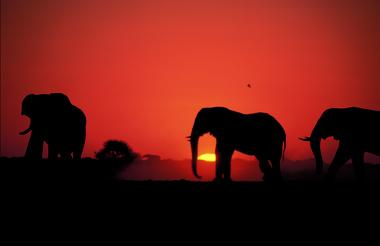
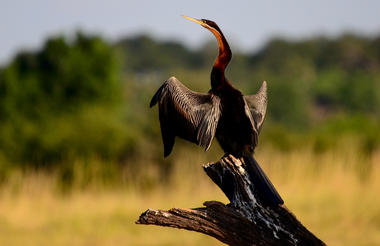
When it comes to Botswana, Savute breaks all the rules: both for animal behaviour and for habitats. Here, lions hunt elephants, leopards take to fishing, the grasslands are vast and open and rocky hills punctuate the flat terrain.
Savute has proved itself somewhat of an enigma over the decades. During years of abundance its marsh fills with water, fed by the Savute Channel. The water weaves its way here from Angola via a chain of rivers and lagoons, spilling out into the marsh and drawing huge herds of elephants, wildebeest, zebras and buffalos.
In drier years, the channel shrinks into small pools and can evaporate completely, leaving the marsh dry and sending wildlife to the waterholes for water, where the tension between plains game and predators heats up over a parched and dusty landscape.
Wherever the plains game goes in Savute, the predators follow close-by, learning tricks of survival to adapt to the marsh’s ever changing nature. Whether the water flows here or not is anyone’s guess. The channel and marsh have a life of their own, independent both of the seasons and the annual rainfall.
Savute doesn’t just offer a safari; it’s also a feast for the eyes. Whitewashed skeletal trees set against green grass and huge blue skies, blinding red sunsets that spill purple and orange across the bush, and endless horizons that fade into a hazy mirage with the heat.
As Savute is part of Chobe National Park, a safari here is limited to game drives only. With the diversity of habitats, wildlife and landscapes that the marsh has to offer however, you’ll still find yourself wishing you had more time to see it all.

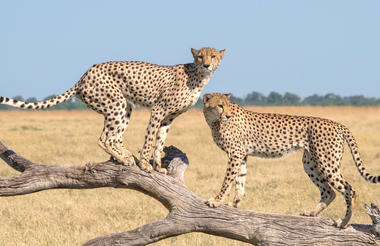
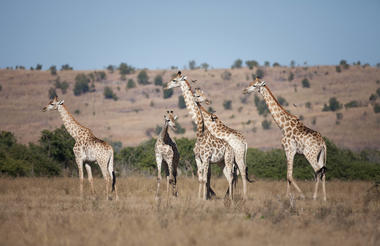
Looking at a map of Botswana, you’d miss Khwai completely if you didn’t know it was there. Wedged between the big-ticket attractions of Chobe National Park to the east and Moremi Game Reserve to the south, Khwai exists as a significant big game destination of its own.
Lying on the eastern fringes of the Okavango Delta with a rich wildlife population and no borders drawn around it on the map, Khwai is often overlooked in favour of its more famous neighbours, though in the winter months it can hold its own for the quality of big game viewing.
During your time here, you’ll spend most days exploring the narrow Khwai River, which forms the natural boundary to the Moremi Game Reserve on the south. The Khwai River is a beacon for wildlife and plays host to leopards stalking lechwe in the long grass, lions swimming from the banks to save their cubs’ during territorial disputes and crocodiles competing with wild dogs for a midday meal of impala.
As Khwai lies outside the parks, it offers the freedom and flexibility normally only possible with the heavier price tag of a private concession. Go off-road for a closer look at sightings, night drive in search of nocturnal species, and, with a little advance planning, head out on game walks to track wildlife on foot.
Khwai is also home to a village community where people live side by side with the resident wildlife. Some camps will offer village visits for a dose of cultural insight to go with your safari. For those not visiting the water camps of the delta, many camps in Khwai offer the chance to get out on a mokoro (traditional canoe), although excursions are less traditional in nature, skirting the riverbanks, rather than open delta floodplains.
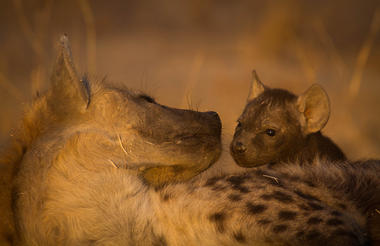
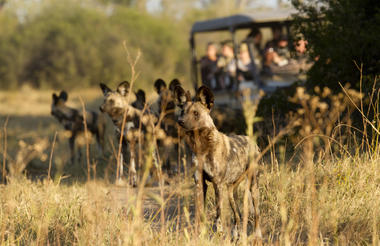
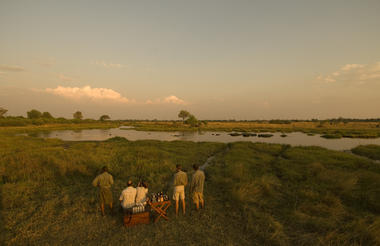
Situated along the banks of the Thamalakane River, in the North-West District of Botswana, Maun, a term that derives its name from the San language, meaning "the place of reeds," serves as the administrative town center of Ngamiland. Maun is notoriously known as a "Frontier" town, and is referred to as the 'gateway' to the Okavango Delta and Moremi Game Reserve as most tourists enter these destinations through this buzzing town.
Although classified as one of the fastest growing towns in Botswana, and boasting one of the busiest airports in Southern Africa, Maun still retains much of its old/traditional (village-like) character, which encompasses the old judicial court of chiefs who are still active. Reed and mud hut infrastructures are seen in and around town as well as donkeys/carts and livestock. However, numerous hotels, lodges, bed and breakfasts, shopping malls, post offices, a museum and a big hospital are available too. Maun also serves as the headquarters for the safari industry, tour operators and air charter companies that offer trips into the Okavango Delta and National Parks such as Moremi Game Reserve, Khwai, Savute, Makgadikgadi, Chobe, Nxai Pan to name a few, as well as monumental historical sites like the Tsodilo Hills. Opportunities to visit nearby cultural villages can also be arranged from this central point.
